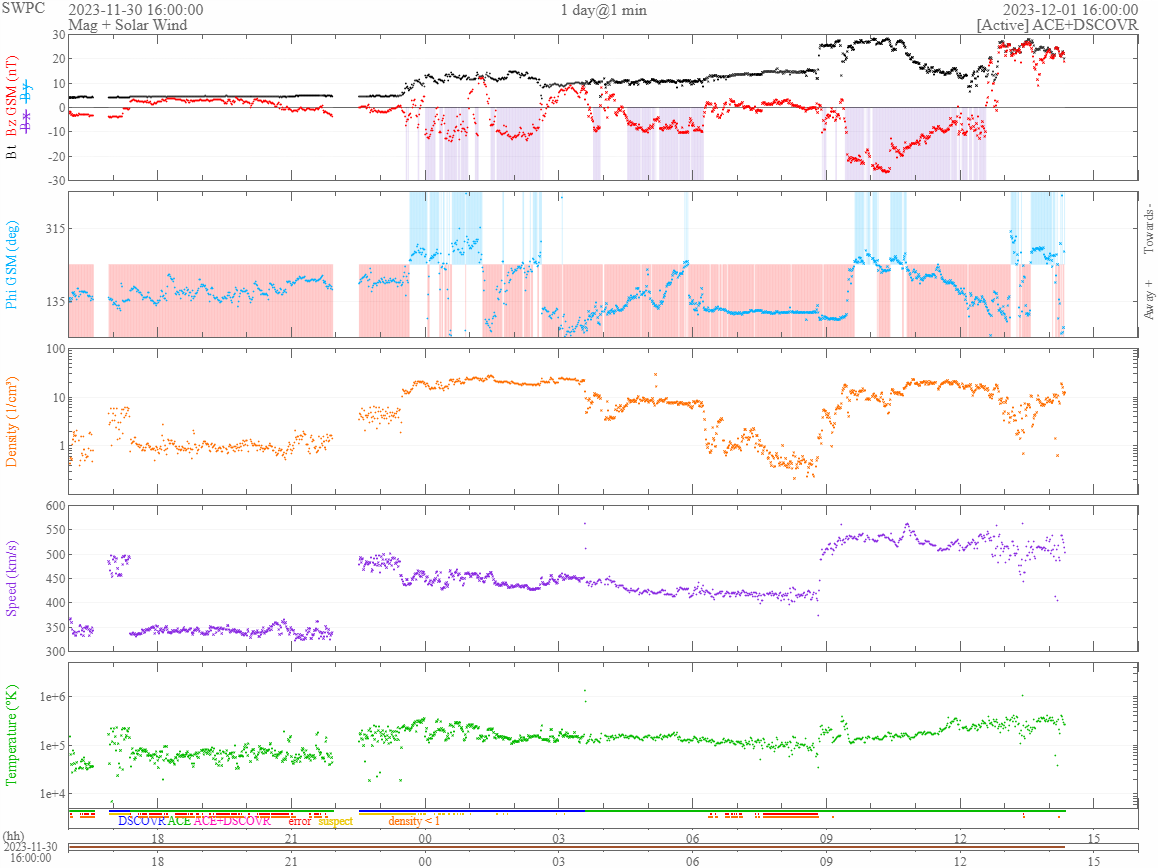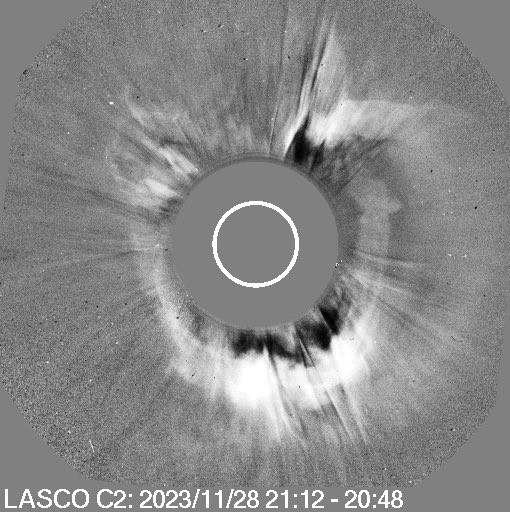Geomagnetic storm update - 1st December 2023
What Has Happened?
There have been at least two coronal mass ejection (CME) arrivals in the solar wind during the last 24 hours. The first at around 23:30 UT on 30th Nov and the second at approximately 08:50 UT on 1st Dec. Geomagnetic activity increased to storm levels in response, peaking (so far) at G3 (on the NOAA Geomagnetic storm scales). Further storm conditions are possible throughout the rest of the day and may continue into the evening and overnight.
Assuming clear dark skies, there is an increased chance of seeing the aurora tonight (1st Dec). Those in Scotland, northern England and Northern Ireland have the best chance if the weather is favourable and the storm continues long enough.
Sign-up to receive Geomagnetic Disturbance Alert emails.
Follow us on Twitter:
Follow @BGSauroraAlert for more occasional aurora alerts.
Follow @BGSspaceWeather for daily space weather forecasts.
Glossary
- BGS
- The British Geological Survey is a geoscience research centre that is part of UK Research and Innovation (UKRI) and affiliated to the Natural Environment Research Council (NERC).
- CME or Coronal Mass Ejection
- The eruption of a portion of the outer atmosphere of the Sun into space, caused by rapid changes in its magnetic field. Often occurs along with a solar flare.
- Solar Wind
- The ever-present expansion of the Sun’s hot outer atmosphere into the solar system, which carries space weather within it.
- Coronal Hole
- A region in the Sun’s outer atmosphere (corona) where hot material can flow unrestrained by its magnetic fields out into space.
- Filament Eruption
- An eruption of solar plasma (i.e. ions and electrons) associated with the upward movement of solar magnetic field lines into the corona. Filaments are usually dark against the bright solar disk but can appear bright (as 'erupting prominences') on the limbs of the Sun against the darkness of space. Filaments are often associated with CMEs
- Sunspot/Active Region
- A region of intense magnetic field in the Sun's visible outer atmosphere often associated with flares and CMEs.



